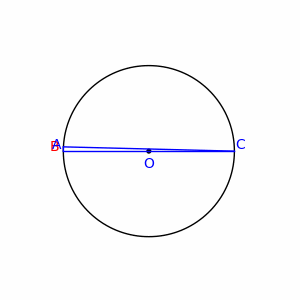I was doing a problem in which I was told the lengths of all sides of an isosceles triangle and asked to find the area.
I solved the problem by dividing the isosceles triangle into two equal triangles to find the height which I used in the area formula for the original triangle.
Looking at the answer, my method resulted in the correct value but, it seems I could have used the legs of the isosceles triangle (both 8) as the base and height and skipped finding the height. Why does that shortcut work?
The question is below:
If the hypotenuse of an isosceles right triangle is $8 \sqrt 2$, what is the area of the triangle?
- (A) 18
- (B) 24
- (C) 32
- (D) 48
- (E) 64

Best Answer
Pythagoras' theorem ($a^2 + b^2 = c^2$) is generally used to compute one "missing" side when two others are known in a triangle known to be a right triangle.
However, there is a converse of Pythagoras' theorem, whereby you can show a given triangle is right if the side lengths satisfy the relation.
In this case, $8^2 + 8^2 = (8\sqrt 2)^2$, so the triangle is right-angled, and you can immediately find the area as $\frac 12 (8)(8) = 32$.
(In this case, you don't need the converse. It's already given to be a right triangle. But in the case you're given the side lengths of $(8,8,8\sqrt 2)$, you can apply the converse to simplify your work a bit).